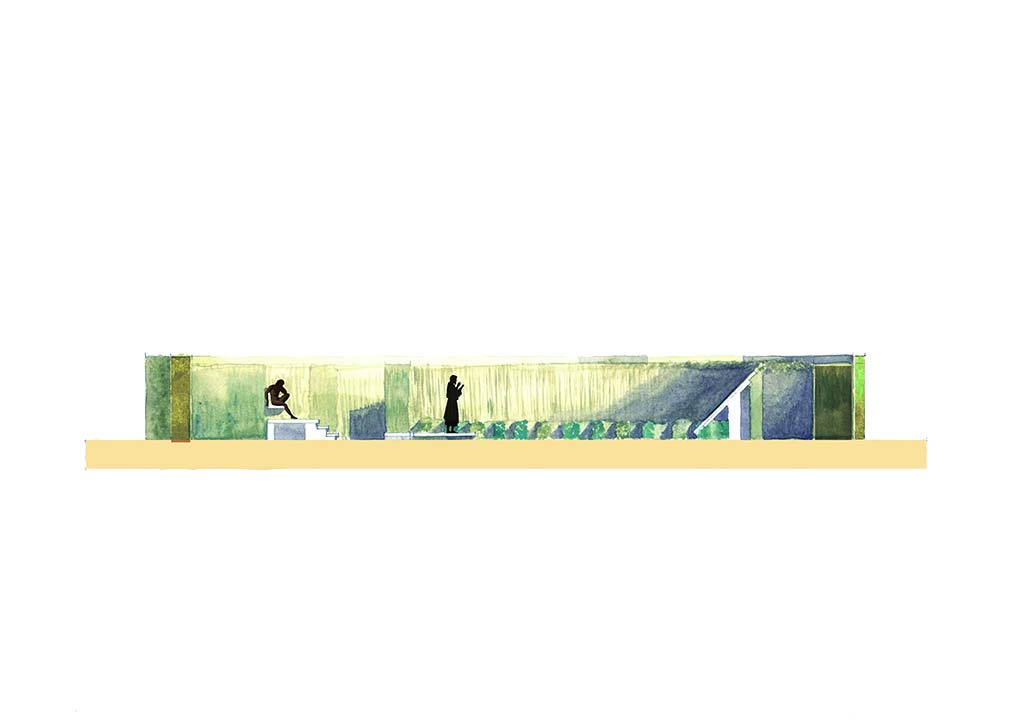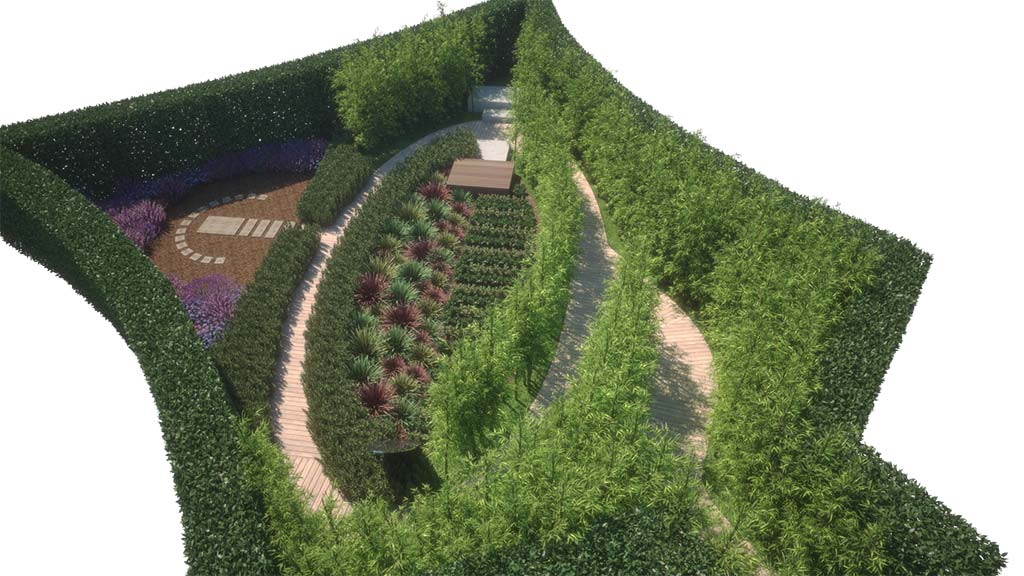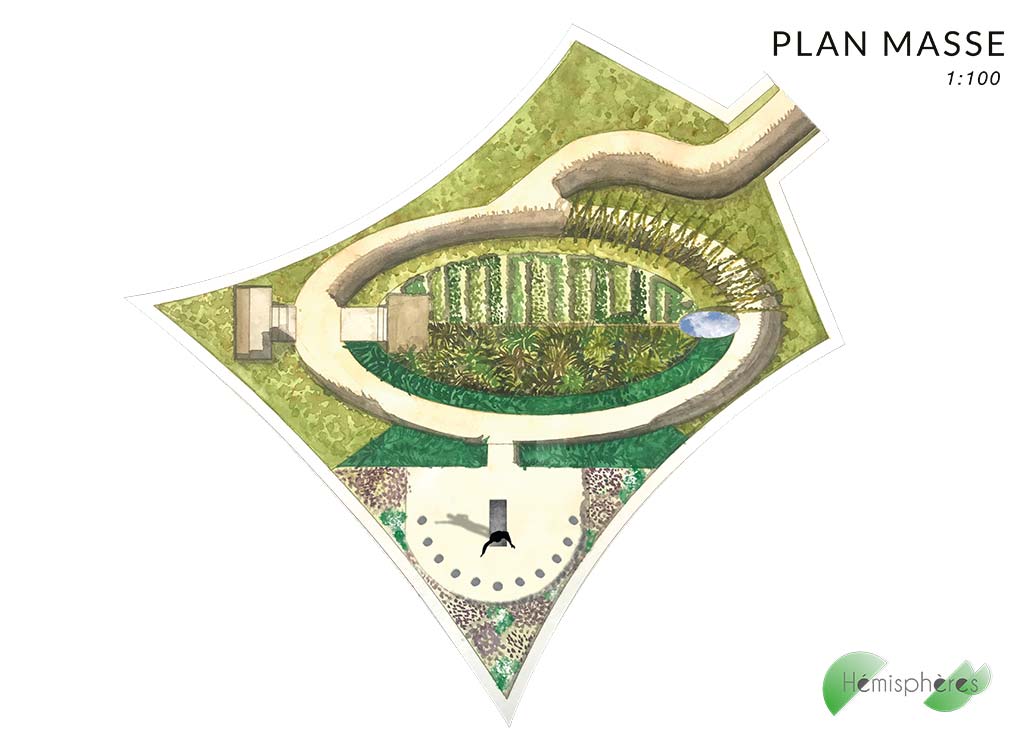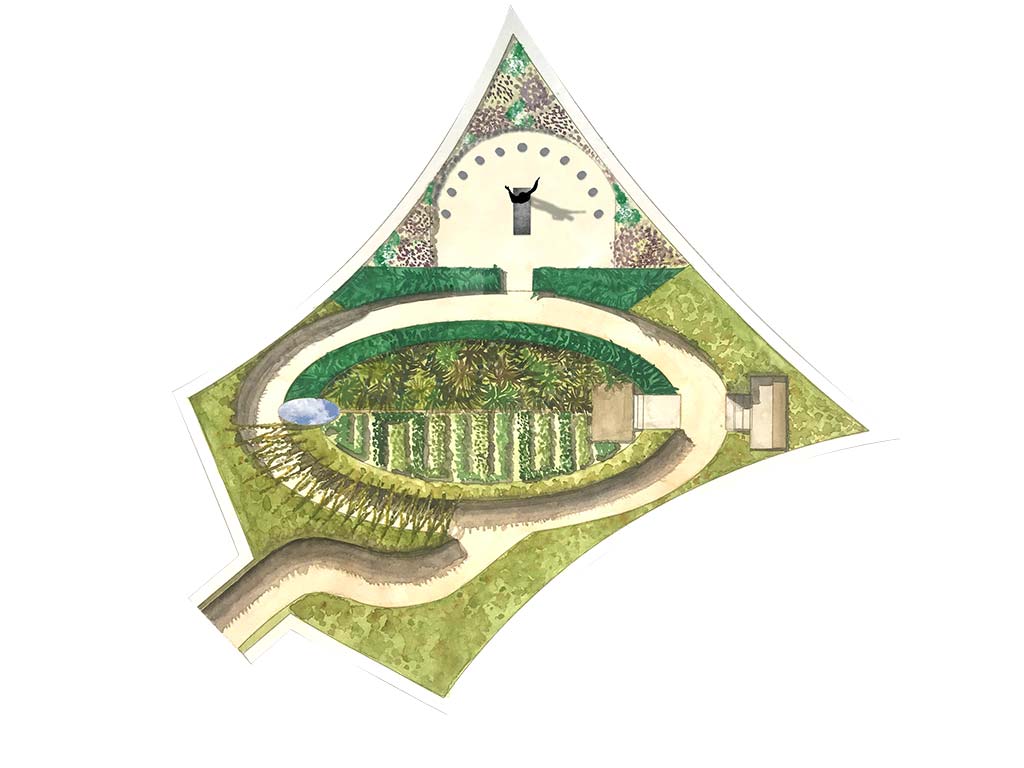Chaumont
Client
Urban Development
Inspired by classical philosophy, the garden of the Hemispheres is a promenade of discovery.
The visitor leaves the familiar world to enter a space of reflection. He must make abstraction of his surroundings to discover his own ideas. He leaves behind what he knows in order to know his own thoughts.

This garden offers the visitor many scenes.
A passage planted with bamboo, signifying departure for a « new » world.
Then an opening reveals an oculus, with its two symbolic parterres. It is a theatre of meditation, as if the two hemispheres of the brain had split open.

Ghislaine Schoeller – Novelist
Two parterres, one cultivated, the other uncultivated. (1) The right hemisphere is described by rows of aromatic herbs: sages, thymes, rosemary, verbena. The left hemisphere is a tangle of wild ophiopogons grasses of different colours. From a platform at the end of the oval, the visitor contemplates the hemispheres. Facing him, a mirror reflects the sky. Or, perhaps, reflects the visitor’s mind beyond the temporal limits of the garden? Retiring to a bench, the visitor lapses into his reverie. Is the garden not a place to dream? The visit continues amid the scent of rosemary. A sundial, for which the visitor provides the marker, records time by his shadow. Time is suspended. The visitor exits the oculus by a trellis covered in bamboo chimes. Thus he returns to the familiar world, accompanied by the chiming bamboo. The garden has created a promenade through the hemispheres of culture and reflection.
[1] Letter from Voltaire to W. Chambers, 7 August 1772. Quoted in Jardins en France 1760-1820; Caisse Nationale des Monuments Historiques et des Sites; Paris 1977.


